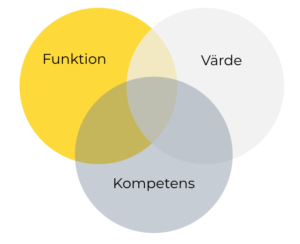MarTech stands for Marketing Technologies and is used as an umbrella term for integrated marketing technologies. These simplify and organize marketing activities, as well as streamline data, prospect management and reporting through lead funnel. Examples of these systems include: social media tools, content management systems, analytics tools, customer data platforms, data management platforms, CRM and marketing automation tools.
The MarTech landscape is changing at a rapid pace and the number of categories is constantly increasing. With so many niche systems designed to simplify different parts of the sales and marketing process, there is a risk of bundling systems for immediate needs, rather than building a thoughtful mix of systems and technologies (MarTech stack) that support the company's long-term goals. Moreover, surveys show that companies use on average 15-20% of the potential and functionality of their MarTech stack. But what is the reason for not using the full potential?
The simplistic explanation could be that we either don't know how to use the tools or we buy systems that we don't need. The solution should be simple: learn how to use the systems we have and don't buy any new systems until we use the full potential of the systems we already have!
How can we optimize the use of our MarTech stack?
Let's consider three overlapping aspects of Martech: Capabilities - Those that are technically possible in the existing Martech stack. Competencies - Those that we can do and know how to do. Value - Those that will improve our business and create value.

In a perfect world, these circles would overlap completely. In practice they do not.
Features & Value
Functionality in MarTech products has become incredibly sophisticated. Which means that most marketers and specialists have to constantly upgrade their skills to learn how to use them. While some features are valuable for certain companies and business models, not all of them are valuable for all companies.

There are some features in your current MarTech stack that, if used, would create business value for your organization. But the exact amount worth using will undoubtedly change over time as your business, customers and stack evolve.
There arise 2 questions to answer: Are there opportunities to learn new skills with unused features in our MarTech stack that would be valuable to our business? Drop all features and products that do not help you create business results. Just because we have skills to use certain features in our MarTech stack, it doesn't mean we should use them, unless we know we get value from them.
Value creation
Everything we do costs something in time, effort, resources, complexity and/or impact on customers. So if it doesn't add value, it is at least an opportunity cost for other value-adding activities that we could invest in.
Instead, invest in the activities that your MarTech stack enables, learn how to use these capabilities or take in external help to exploit the potential. Mapping the MarTech stack in this way also helps to justify why new MarTech products can be useful. Even if we don't fully utilize the features of the products in our current MarTech stack. (Read more about how to build an effective stack here)
If a tool can deliver positive business value to our business - and it's something that the tools in the existing MarTech stack can't provide - consider adding this new tool to your stack. To develop our knowledge and add value to the business, it is important to optimize the use of your MarTech stack. The most common pitfall is to use features and systems just because you can and have the opportunity. The blog post was inspired by this article.





